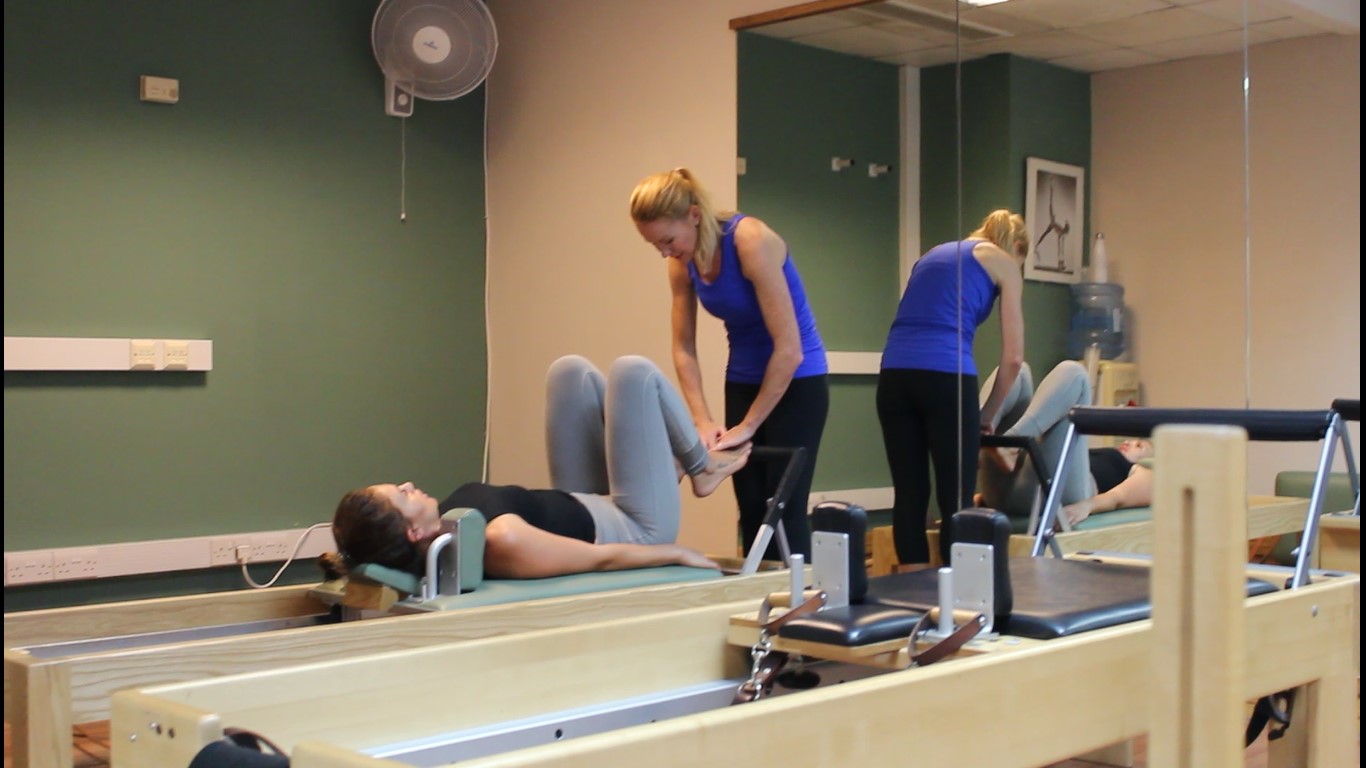27 Jan Help your lower back pain with Studio Pilates
If you’ve ever moaned, “Oh, my back hurts!” you are not alone. According to the National Institute of Health, USA about 80% of adults experience lower back pain at some time during their life. Back pain can range from a dull, constant ache to a sudden, sharp pain. Acute back pain comes on suddenly and usually lasts from a few days to a few weeks. If it lasts for more than three months, it will then become chronic back pain.
Pain in the lower back is quite a common occurrence in today’s society and can be associated with issues such as spinal stenosis, bulging discs, herniated discs, degenerative discs, spondylosis and spondyloysthesis.
So many people suffer in silence and in their attempt to eliminate the back pain, they perform exercises or undergo activities which might actually put their back condition at even further risk. Many gyms and sports facilities are not fully equipped with the right apparatus and instructors who are fully certified and experienced in dealing with the majority of back issues.
Clinical Pilates performed in an equipped studio with certified Pilates Instructors is key to bringing your spine back to its optimum health. Whatever the issue with the back, in Pilates the focus is to de-compress the lumbar spine by working to create a balance of strength between the lower, deep abdominals and low back muscles. The equipment we use provides support to the spine and provides tactile feedback.
The Pilates sessions focus on safe movements. We provide modifications as needed and/or omit exercises. Each repetition of an exercise must be pain free. Our aim is to initially eliminate the pain and then work on strength.
Sitting on the mat is generally painful for anyone with lower back pain and as such, seated exercises are usually omitted at first as they put a much heavier load on the lower back compared to lying down. Even though you might not have pain while sitting, you might notice pain while exercising.
There are many exercises in the repertoire that could be contra-indicatory for specific back issues and as such should be avoided. Depending on the issue, spinal flexion, rotation and side bending are not recommended, whilst extension would be avoided with other spinal conditions.
When practising Pilates, or any form of exercise for that matter, you should always focus on getting out of your pain. Make your range smaller or eliminate the exercise altogether if you feel pain. Always listen to your body. Remember that NO PAIN is of utmost importance.
When working on the Universal Reformer, we perform specific modifications to reduce the load, or increase the load in order to assist the muscles around the spine. When you are in pain, you have little control. You must ensure that the exercises and transitions are performed in a way that would help your back get stronger, not load it more and make the issue worse.
Pilates can be a great for you if the movements are performed safely and with a specialised instructor in a studio environment. It is important to make wise choices of what to do and what not to do. Create good communication with your instructor. If you experience any pain, you must inform your instructor immediately. “The rule is No Pain. It’s not the old “No pain, no gain.” “It is just No Pain.”
Joseph Pilates created the equipment for a reason, to stretch, strengthen and lengthen whilst at the same time create control in the movement.
Don’t despair, help is at hand. Just make sure you make the right choice!




Sorry, the comment form is closed at this time.